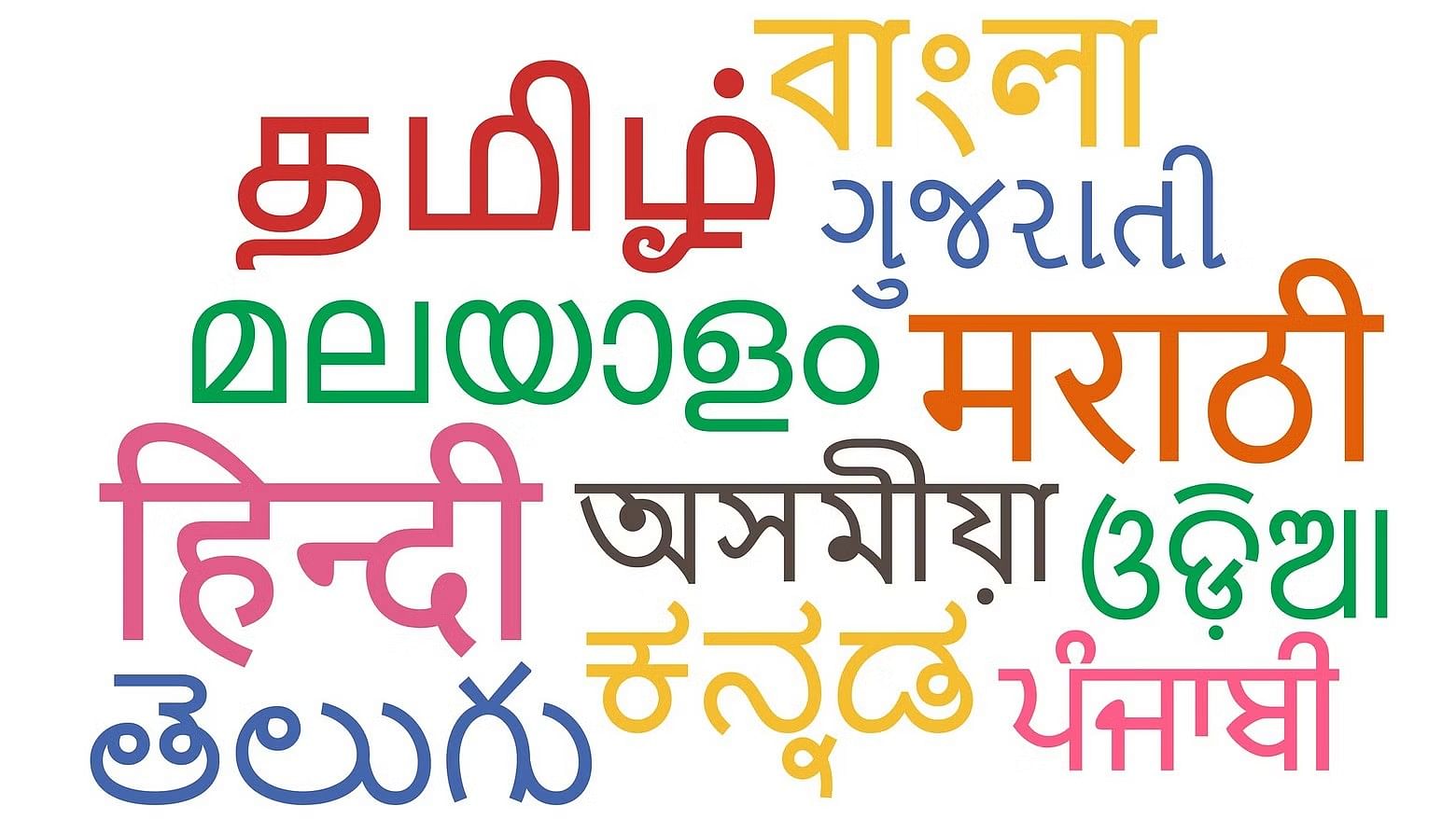
Representative image showing various languages.
Credit: iStock Photo
During colonial times, many of India’s languages were brought into the print medium. It is not that previously the knowledge of writing was absent. Scripts were already used; paper too was used as a means of reproducing written texts. However, despite being written, texts had been circulating mainly through the oral means. The print technology diminished the existing oral traditions. New norms of literature were introduced, privileging the written over the oral, and introducing the concept that a literary text needs to be essentially monolingual. These ideas, and the power relation prevailing in the colonial context, started affecting the stock of languages in India.
The languages that had not been placed within the print technology came to be seen as inferior languages. After Independence, the Indian states were created on the basis of languages. If a language had a script, and if the language had printed literature in it, it was given a separate state within the Union of India. Languages that did not have printed literature, even though they had a rich tradition of oral literature, were not considered.
For most part of India’s long history, multilingualism was a natural cultural condition for various regions in the subcontinent. Therefore, when the spirit of nationalism started developing in India, the idea of forming a single language nation never crept into the thinking of any of the Indian nationalists, despite the differences between the ideological positions of the leaders during the freedom struggle. The long and involved discussions in the Constituent Assembly from 1946 to 1949 provide ample testimony to the general acceptance of the idea of India as a nation with many languages. However, the Constituent Assembly had to resolve the contradiction between the astronomically large numbers of languages—of which it knew through G A Grierson’s Linguistic Survey of India — and the need for a nationally shared language of communication. The Constituent Assembly debates on this issue remained fairly inconclusive, resulting in the adoption of the special Schedule of Languages, the Eighth Schedule of the Constitution.
After Independence, language diversity received a constitutional validity when the Constituent Assembly decided, after elaborate debate and discussion, to introduce the Eighth Schedule containing 14 languages as deserving of recognition. The expanded list now consists of 22 languages. Nearly 30 languages are hoping to be included in it along with several hundred languages of Adivasis and nomadic communities. While nationalism evolved in Europe during the 19th century in terms of linguistic unity as an ideal, in India, speakers of these hundreds of different languages accepted and opted to belong to a single nation.
For millennia, Indians have cultivated a multilingual mindset, integrating it into their daily lives and environment. The national anthem they sing with such great pride describes India primarily in terms of some of its language communities, speakers of the Punjabi, Sindhi, Gujarati, Marathi, Dravidian languages, Odia, and Bangla. Clearly, Indians understand that our unity as a nation doesn’t hinge on speaking a single language, nor does it falter despite our rich linguistic diversity; rather, it thrives precisely because of the multitude of languages we embrace. It was precisely for this reason that, soon after Independence, the Union Government set the State Reorganisation Commission and created linguistic states.
It was Sir Herbert Risley (1851–1911), then the Home Secretary, who wrote to the Bengal government in 1903 introducing language as the divisive principle. As a result, Bengal was proposed to be partitioned in 1905 into East Bengal and West Bengal. When the idea of using language as the defining principle for demarcating provinces appeared in the Congress Session of 1917, Annie Besant strongly opposed it. A decade later, in its Nagpur Session in 1927, the Congress accepted the idea of linguistic distribution of the states.
While Jawaharlal Nehru accepted the principle, and the Linguistic Provinces Commission was set up in 1948, he cautioned against language becoming a threat to India’s national unity. During the early 1950s, Andhra Pradesh became the first such Linguistic State to be created in the wake of a violent popular agitation. In 1953, the State Reorganisation Commission was set up.
The entire process indicates clearly that India accepted the 19th century ideas of nationalism as the basis of the Indian freedom struggle without accepting the idea of ‘nation as a linguistic singular’. Though the Constituent Assembly debates displayed abundant respect for the idea of India as ‘a linguistically plural nation’, language identity has played an important role in shaping the process of restructuring states. Implicit in the process is the flawed logic that every language that has a script, or has entered print technology and therefore has produced some of its literature in print, needs to assert its identity by aspiring to form a state within the ‘nation as a language plural’. Probably, this insistence will continue to create political upheavals and mass movements till we realise that the hierarchy of languages based on the idea of writing as inherently superior to speech is neither linguistically scientific nor historically valid.
(G N Devy is chairperson, The People’s Linguistic Survey of India)